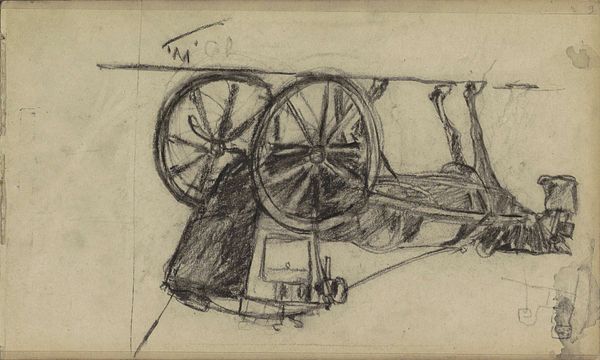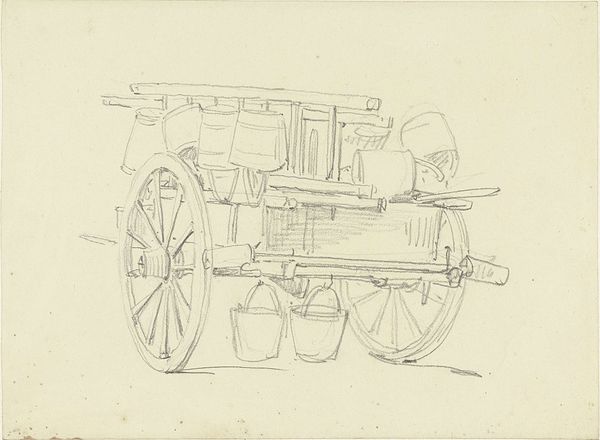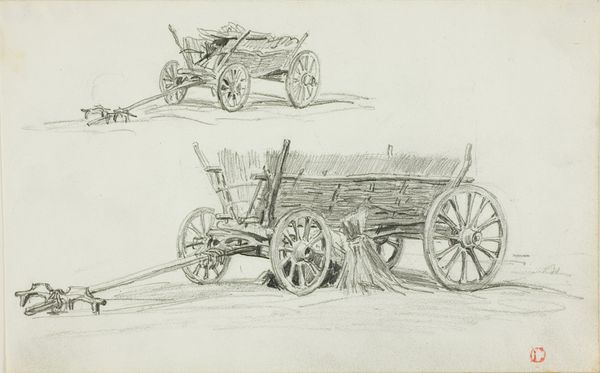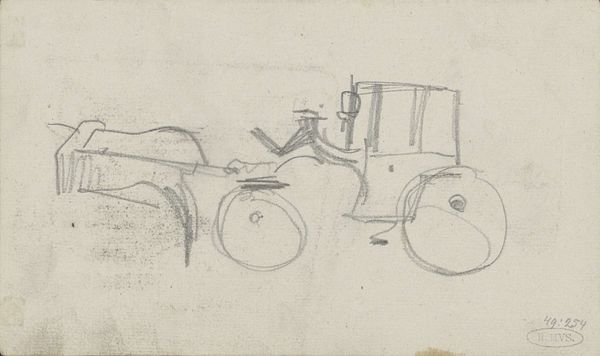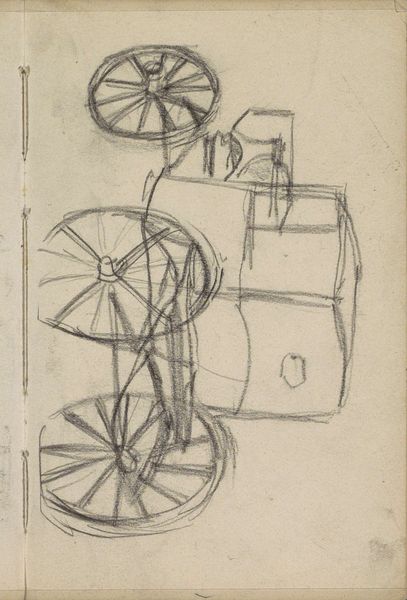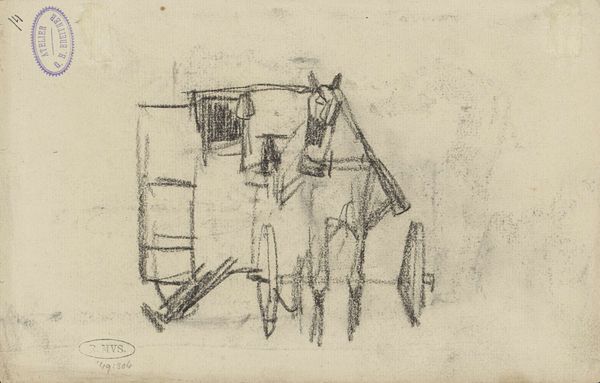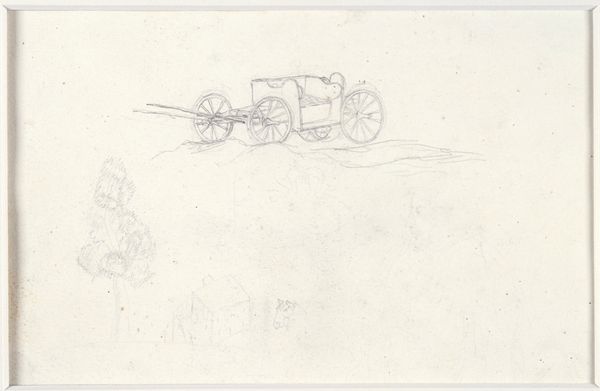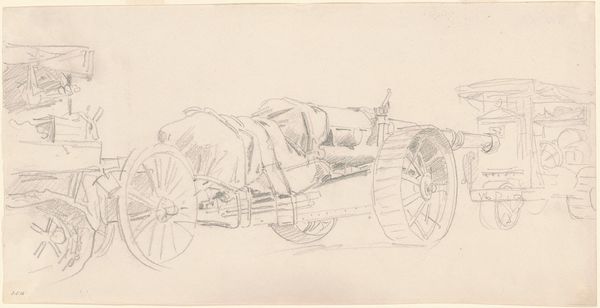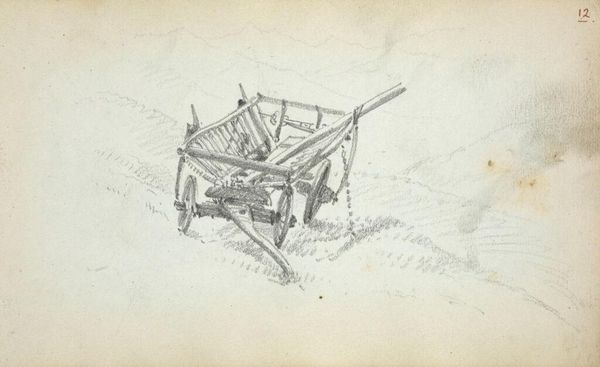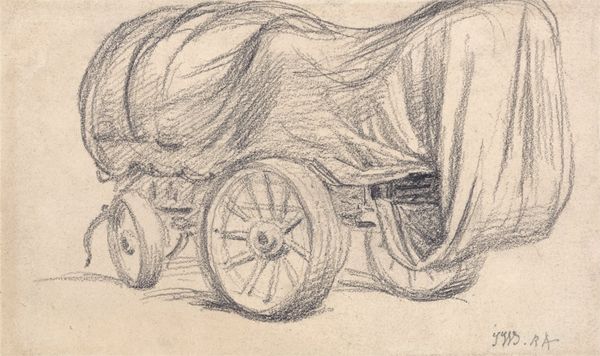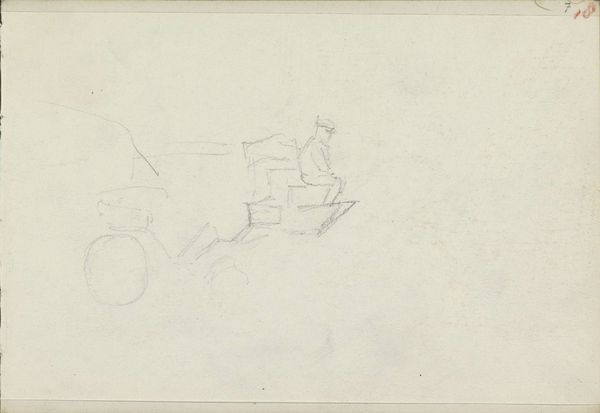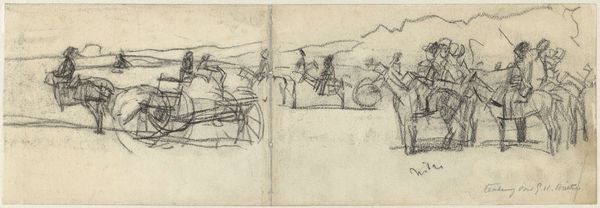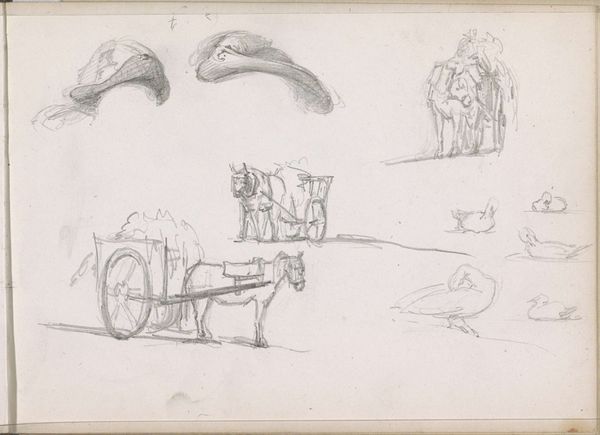
drawing, pencil
#
drawing
#
landscape
#
pencil
#
realism
Copyright: Rijks Museum: Open Domain
Editor: Here we have Jozef Israëls' pencil drawing, "Kar," created sometime between 1834 and 1911. It looks like a sketch of a wagon or cart, but with a very abstract and atmospheric background... Almost like a ghost is lurking. What do you see in this piece? Curator: Well, you’re right; there's a striking contrast here! The cart itself is rendered with quite direct lines, a tangible, almost stoic presence. Yet, it’s juxtaposed with this hazy, ethereal… something… that does, indeed, feel a little spectral. Perhaps it represents the passage of time? Or a memory fading at the edges? Editor: Passage of time... That's interesting. Is it common for realist landscapes to carry such symbolic weight? Curator: Israëls wasn’t merely a recorder of landscapes. He used realism, yes, but to excavate feeling, you know? That diffused background might be more important than the defined cart, inviting us to reflect on the impermanence of things. What do you make of the placement? It is so asymetrical... Editor: It feels unbalanced! The heavy, dark lines of the cart pull the eye to the right, while the left feels empty and unresolved. I find that a little unsettling. Curator: Precisely! That tension, that imbalance, keeps us engaged. Perhaps the "Kar," the cart, is burdened not just with goods, but with untold stories and histories, with only some of these revealed and clear for the viewer. Editor: So it is both tangible and mysterious. A concrete object infused with something beyond. I’ll definitely look at Israëls' work differently now, and will have more understanding of landscapes and symbolyc weight. Curator: Indeed! Art whispers to us, you know? And sometimes, the whispers are the loudest part.
Comments
No comments
Be the first to comment and join the conversation on the ultimate creative platform.
